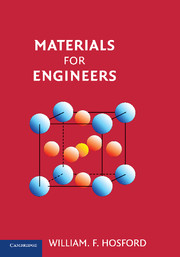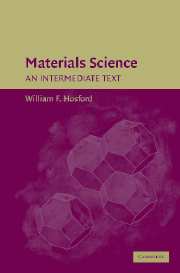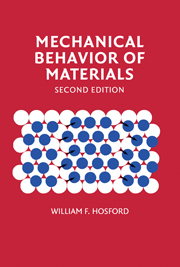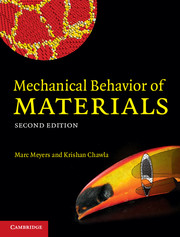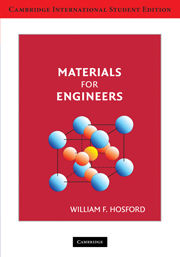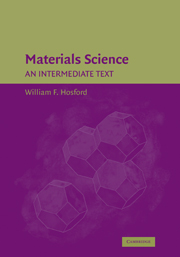Materials for Engineers
This text is intended for a first undergraduate course in materials science and engineering with an emphasis on mechanical and electrical properties. The text features numerous useful examples and exercises. It differs from available texts in that it covers the materials of greatest interest in most undergraduate programs, leaving more specialized and advanced coverage for later course books. The text begins with phases and phase diagrams. This is followed by a chapter on diffusion, which treats diffusion in multiphase systems as well as single-phase systems. The next several chapters on mechanical behavior and failure should be of particular interest to mechanical engineers. There are chapters on iron and steel and on nonferrous alloys followed by chapters on specific types of materials. There is an emphasis on manufacturing, including recycling, casting and welding, powder processing, solid forming, and more modern techniques including photolithography, vapor deposition and the use of lasers.
- Intended for a one-semester course
- Covers materials most commonly used by mechanical engineers
- Emphasis on manufacturing, including recycling, casting and welding, powder processing, solid forming
- Covers modern techniques including photolithography, vapor deposition and the use of lasers
Reviews & endorsements
'Notably, throughout the text there are numerous useful examples and problems that can be discussed, and references which are often helpful.' Materials World
Product details
July 2014Paperback
9781107420519
296 pages
254 × 178 × 16 mm
0.52kg
Available
Table of Contents
- 1. Introduction
- 2. Phases
- 3. Diffusion
- 4. Mechanical behavior
- 5. Mechanical failure
- 6. Annealing
- 7. Iron and steel
- 8. Non-ferrous metals
- 9. Casting and welding
- 10. Solid shaping
- 11. Polymers
- 12. Polymer processing
- 13. Glasses
- 14. Crystalline ceramics
- 15. Powder processing
- 16. Pottery and concrete
- 17. Composites
- 18. Carbon
- 19. Fibers, foams and porous materials
- 20. Electrical properties
- 21. Optical and thermal properties
- 22. Magnetic materials
- 23. Corrosion
- 24. Modern manufacturing techniques and surface treatments and recycling
- Appendix I. Wood
- Appendix II. Miller indices for planes and directions
- Appendix III. Xray diffraction
- Appendix IV. Surfaces
- Appendix V. Dislocations
- Appendix VI. Avrami kinetics
- Appendix VII. Organic chemistry
- Appendix VIII. Average molecular weight
- Appendix IX. Bond geometry in compounds
- Appendix X. Weibull analysis.

